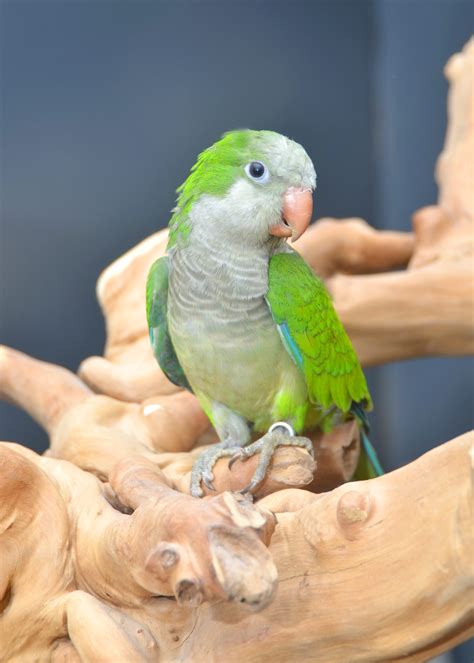
Birdhouses standing empty? The reason birds aren’t taking up residence might stem from overlooking critical factors like size, location, and maintenance. Experts say choosing the right dimensions for the intended species, strategically placing the birdhouse away from predators, and keeping it clean are key to attracting feathered families.
Many homeowners eagerly erect birdhouses, envisioning cheerful avian families nesting in their yards. However, the reality often falls short, leaving birdhouses unoccupied and homeowners wondering why. According to ornithologists and birding experts, the failure to attract birds frequently boils down to several common mistakes, most of which are easily avoidable with a little planning and knowledge. These mistakes range from selecting an unsuitable birdhouse design to placing it in an environment that doesn’t appeal to the target species. Ignoring cleaning protocols also contributes significantly to low occupancy rates.
Size and Design Matters
One of the most fundamental mistakes is choosing a birdhouse that isn’t appropriately sized for the desired bird species. Different birds require different-sized nesting cavities. “A birdhouse that’s too large can attract unwanted guests, like starlings or house sparrows, which can outcompete native birds,” warns Dr. Emily Carter, an ornithologist specializing in urban bird populations. The entry hole size is also critical. A hole that’s too large can allow predators, such as squirrels or larger birds, access to the nest. Conversely, a hole that’s too small will prevent the target species from entering. For example, wrens need a significantly smaller opening than bluebirds.
The design of the birdhouse also plays a role. Birdhouses should have adequate drainage holes to prevent water from accumulating inside, which can lead to mold and bacteria growth, making the nest unsuitable. Ventilation is equally important to keep the nest cool during hot weather. A simple roof overhang can provide shade and protect the entrance from rain. Avoid birdhouses with perches, as these can assist predators in accessing the nest. “Perches might seem like a nice addition, but they essentially provide a foothold for predators like cats,” explains wildlife rehabilitator Sarah Miller.
Furthermore, the material used to construct the birdhouse matters. Natural, untreated wood is generally the best option. Avoid plastic or metal birdhouses, as they can overheat quickly in the sun, creating an inhospitable environment for the birds and their young. “Wood provides insulation and allows the birdhouse to breathe, regulating the temperature inside,” says David Thompson, a birdhouse manufacturer.
Location, Location, Location
Even the perfect birdhouse will remain vacant if it’s not placed in a suitable location. The habitat surrounding the birdhouse needs to match the preferences of the target species. Birds have specific requirements for food, water, and shelter, and the location of the birdhouse must meet those needs.
Consider the proximity to food sources. Birds need access to insects, seeds, berries, or other food items, depending on their diet. Placing a birdhouse near a bird feeder that offers the appropriate food can increase the chances of attracting birds. Water is another essential requirement. If a natural water source, such as a stream or pond, is not available, consider adding a bird bath nearby.
Shelter from the elements and predators is also crucial. Birdhouses should be placed in areas that offer some protection from strong winds, direct sunlight, and heavy rain. “Placement away from direct sunlight, especially during the hottest part of the day, is crucial for the survival of the nestlings,” emphasizes Carter. Avoid placing birdhouses near busy roads or areas with high levels of human activity, as this can stress the birds.
Predator control is another important consideration. Mount the birdhouse on a pole with a baffle to prevent cats, squirrels, and other predators from climbing up to the nest. Avoid placing the birdhouse on a tree branch, as this provides easy access for predators. The height of the birdhouse is also important. Different species prefer different heights. Research the specific requirements of the target species to determine the optimal mounting height.
The Importance of Cleanliness
Neglecting to clean a birdhouse regularly is a major deterrent for birds. Old nesting material can harbor parasites, bacteria, and mold, making the birdhouse an unhealthy environment. “Birds are very particular about hygiene,” says Miller. “They’re not going to nest in a dirty, infested birdhouse.”
Birdhouses should be cleaned at least once a year, preferably after the nesting season has ended. Remove all old nesting material, and scrub the inside of the birdhouse with hot, soapy water. Rinse thoroughly and allow the birdhouse to dry completely before replacing it. It’s also a good idea to check the birdhouse periodically throughout the year for signs of damage or infestation. Repair any cracks or holes, and remove any unwanted pests.
Furthermore, different regions have different nesting seasons and bird behaviors. Understanding local bird behaviors is crucial for effectively managing and maintaining birdhouses. Contacting local birding organizations or wildlife centers can provide invaluable information on regional bird habits.
Choosing the Right Birdhouse Material
The material used to construct a birdhouse plays a significant role in its attractiveness and suitability for birds. Different materials offer varying degrees of insulation, durability, and breathability. Selecting the appropriate material ensures the birdhouse provides a safe and comfortable environment for nesting birds.
-
Wood: Natural wood is widely considered the best material for birdhouses. It provides good insulation, allowing the birdhouse to maintain a stable temperature. Wood also allows for natural airflow, preventing the buildup of moisture and mold. Untreated cedar and redwood are particularly good choices because they are naturally resistant to rot and insects. Avoid using pressure-treated wood, as it contains chemicals that can be harmful to birds.
-
Plastic: Plastic birdhouses are durable and easy to clean, but they can overheat quickly in direct sunlight, making them unsuitable for birds. Plastic also doesn’t breathe, which can lead to moisture buildup inside the birdhouse. If you choose to use a plastic birdhouse, make sure it is light-colored to reflect sunlight and has adequate ventilation.
-
Metal: Metal birdhouses are also durable, but like plastic, they can overheat quickly. Metal can also rust and corrode over time, especially in damp environments. Avoid using metal birdhouses, or choose a metal birdhouse with a light-colored, reflective finish and adequate ventilation.
-
Other Materials: Birdhouses can also be made from other materials, such as gourds or repurposed items. Gourds provide a natural, rustic look and are well-suited for certain bird species. Repurposed items, such as old license plates or tin cans, can be used to create unique birdhouses, but make sure the materials are safe and non-toxic.
Enhancing the Habitat
Attracting birds to a birdhouse requires more than just providing a suitable nesting cavity. Creating a welcoming habitat in your yard can significantly increase the chances of attracting birds.
-
Native Plants: Planting native trees, shrubs, and flowers provides food, shelter, and nesting material for birds. Native plants are also adapted to the local climate and soil conditions, making them easier to care for.
-
Water Source: Providing a clean water source, such as a bird bath or small pond, is essential for attracting birds. Birds need water for drinking and bathing.
-
Food Source: Supplementing natural food sources with bird feeders can attract a wider variety of birds to your yard. Offer different types of food, such as seeds, nuts, and suet, to cater to different bird species.
-
Brush Piles: Creating brush piles in your yard provides shelter for birds and other wildlife. Brush piles can also attract insects, which are an important food source for birds.
-
Reduce Pesticide Use: Pesticides can harm birds directly or indirectly by reducing their food supply. Avoid using pesticides in your yard, or choose organic alternatives.
Long-Term Management and Monitoring
Once a birdhouse is installed, it’s important to monitor its occupancy and condition regularly. This allows for timely interventions to address any issues and ensure the birdhouse remains a safe and suitable nesting site.
-
Regular Inspections: Inspect the birdhouse regularly for signs of damage, infestation, or unwanted guests. Repair any cracks or holes, and remove any pests.
-
Monitoring Occupancy: Keep track of which bird species are using the birdhouse and how successful they are at raising young. This information can help you refine your birdhouse placement and management strategies.
-
Record Keeping: Maintain records of birdhouse maintenance, occupancy, and any observations you make. This information can be valuable for tracking long-term trends and assessing the effectiveness of your efforts.
-
Adaptation: Be prepared to adapt your approach based on your observations and experiences. Bird preferences and environmental conditions can change over time, so it’s important to remain flexible and responsive.
Addressing Common Concerns and Myths
Several common misconceptions surround birdhouse placement and maintenance. Addressing these misconceptions can help homeowners make informed decisions and improve their chances of attracting birds.
-
Myth: Birdhouses should be painted bright colors to attract birds. Fact: Bright colors can actually deter birds, as they can attract predators or make the birdhouse too conspicuous. Choose natural, muted colors that blend in with the surrounding environment.
-
Myth: Birdhouses should be placed close together to create a bird-friendly community. Fact: Birds are territorial and require a certain amount of space to forage and nest. Placing birdhouses too close together can lead to competition and aggression.
-
Myth: Birdhouses should be left up year-round to provide winter shelter for birds. Fact: While some birds may use birdhouses for winter shelter, it’s important to clean them out after the nesting season to remove any parasites or bacteria.
-
Myth: Birdhouses should be placed in dense foliage for added protection. Fact: Dense foliage can actually make it easier for predators to access the birdhouse. Choose a location with some open space around the birdhouse to deter predators.
-
Myth: Once a birdhouse is occupied, it’s best not to disturb it. Fact: While it’s important to avoid disturbing nesting birds unnecessarily, it’s also important to monitor the birdhouse regularly to ensure everything is going well.
Local Regulations and Conservation Efforts
Before installing birdhouses, it’s advisable to check for any local regulations or ordinances that may apply. Some areas have restrictions on the placement of structures, including birdhouses, to protect natural habitats or maintain aesthetic standards.
Furthermore, participating in local conservation efforts can enhance the impact of individual birdhouse projects. Contributing data on bird sightings, nesting success, and habitat conditions to citizen science initiatives helps researchers and conservationists monitor bird populations and develop effective conservation strategies. Engaging with local birding clubs and conservation organizations provides opportunities to learn more about bird behavior, habitat requirements, and conservation challenges.
Conclusion
Attracting birds to a birdhouse requires careful planning, attention to detail, and a commitment to long-term maintenance. By selecting the right birdhouse design, choosing a suitable location, keeping the birdhouse clean, and enhancing the surrounding habitat, homeowners can create a welcoming environment for feathered friends and enjoy the beauty and benefits of having birds in their yards. Remembering the importance of understanding the specific needs and preferences of the target species, avoiding common mistakes, and actively participating in conservation efforts will maximize the success of any birdhouse project. The satisfaction of observing a thriving avian family in one’s own backyard is a rewarding experience that enriches both the individual and the local ecosystem.
Frequently Asked Questions (FAQs)
1. What is the most common reason why birds don’t nest in birdhouses?
The most common reason is an unsuitable birdhouse or location. This includes factors like the wrong size for the target species, poor placement relative to predators or food sources, and lack of cleanliness. “A birdhouse that’s too large can attract unwanted guests, like starlings or house sparrows, which can outcompete native birds,” says Dr. Emily Carter, highlighting the size issue.
2. How often should I clean my birdhouse, and when is the best time to do it?
Birdhouses should be cleaned at least once a year, preferably after the nesting season has ended. Late summer or early fall is an ideal time. “Birds are very particular about hygiene,” explains Sarah Miller. “They’re not going to nest in a dirty, infested birdhouse.”
3. What type of wood is best for building a birdhouse, and why?
Natural, untreated wood like cedar or redwood is best. These woods are naturally resistant to rot and insects. Avoid pressure-treated wood. “Wood provides insulation and allows the birdhouse to breathe, regulating the temperature inside,” explains David Thompson, emphasizing the importance of natural materials.
4. Where is the best place to position a birdhouse to attract birds and deter predators?
The ideal location is a quiet area away from heavy human traffic, with some protection from the elements. Mount the birdhouse on a pole with a baffle to prevent predators from climbing. Avoid placing it on a tree branch. Placement away from direct sunlight, especially during the hottest part of the day, is crucial for the survival of the nestlings,” emphasizes Carter.
5. What size entrance hole is appropriate for different bird species?
The size of the entrance hole varies greatly depending on the species. Wrens need smaller holes than bluebirds. Research the specific needs of the target species. A hole that’s too large can allow predators access to the nest. Conversely, a hole that’s too small will prevent the target species from entering. Consult birding guides or local experts for specific recommendations.









